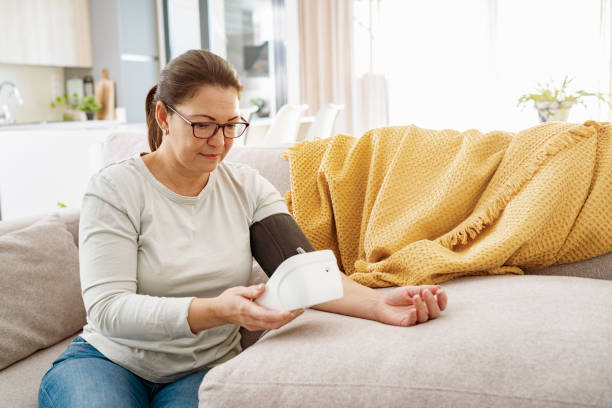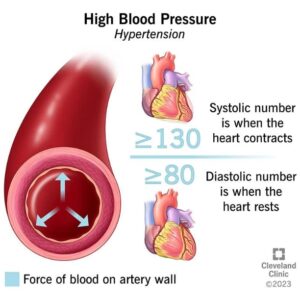Can blood pressure be managed effectively between doctor visits with a remote blood pressure monitoring device? Remote patient monitoring (RPM) devices allow patients to monitor their blood pressure from home. These devices send vital sign data to a healthcare provider, who can then review the data in real-time.
Care providers can check a patient’s condition more frequently between office visits. For instance, if a patient shows a spike in blood pressure, the provider can monitor the patient’s reading or adjust a treatment plan right away.
In this blog post, we report on a recent study focusing on the significance of variability in blood pressure readings and emphasizing the crucial role of remote blood pressure monitoring in comprehensive patient management.
Hypertension Overview
Hypertension is a prevalent cardiovascular condition that requires accurate blood pressure monitoring. As blood pressure levels increase, your susceptibility to various health issues like heart disease, heart attack, and stroke also escalates. Blood pressure assesses the pressure exerted by blood against the walls of blood vessels. According to Cleveland Clinic, a high blood pressure diagnosis means your top number is at least 130, and your bottom number is at least 80.
The top number represents the systolic blood pressure, gauges the pressure on artery walls when the heart beats or contracts. The lower number is the diastolic blood pressure. That measures the pressure on artery walls between beats when the heart is relaxed. Healthcare professionals typically measure blood pressure in millimeters of mercury (mmHg).
Understanding the Challenges of Variability
Recently, blood pressure variability was found between in-office visit-to-visits, according to a Yale New Haven study published by The American Heart Association. Visit-to-visit variability poses significant challenges for healthcare providers who rely solely on episodic clinic evaluations. Real-world practice reveals marked variability in blood pressure measurements, making it difficult to assess and manage hypertension based on outpatient readings alone. Visit-to-visit variability (VVV) highlights the limitations of relying solely on episodic clinic evaluation for effective patient management. Incorporating in-office visits with remote patient monitoring (RPM) blood pressure monitoring technology, such as a remote blood pressure monitoring device, can help address these challenges.
Implications for Hypertension Management
Managing hypertension based solely on sporadic clinic visits becomes challenging due to the fluctuations in blood pressure readings. The VVV complicates determining the effectiveness of treatment interventions and monitoring patient progress accurately. The following section introduces the benefits of incorporating remote patient monitoring technology into hypertension management with a remote blood pressure monitoring device.
The Remote Blood Pressure Monitoring Device: Beyond Episodic Clinic Evaluation
To overcome the challenges of visit-to-visit variability, healthcare providers must expand their approach to hypertension management. Relying solely on episodic clinic evaluations alone may not provide a complete picture of a patient’s blood pressure control and treatment response. Therefore, embracing alternative monitoring methods beyond clinic evaluations, such as a cellular blood pressure monitor, can help manage hypertension.
Addressing Implementation Challenges in Self-Monitoring
Out-of-office monitoring techniques, such as ambulatory and remote patient monitoring of blood pressure, provide valuable insights into a patient’s blood pressure patterns over an extended period. These include technological limitations, cost considerations, access to testing, provider education, and adherence to proper protocols. For example, there is room for error when a patient takes measurements with a traditional blood pressure monitor at home. Furthermore, patients may need to write the measurement numbers down or jot down erroneous data.
Technological Innovation: A Remote Blood Pressure Monitoring Device
Medical advancements are aiding in hypertension management. Home wrist blood pressure monitors or arm cuff monitors are commonly used. When a patient takes measurements at home with a remote blood pressure monitoring device, it helps reduce errors with accurate and reliable data. A remote blood pressure monitor automatically sends the measurement to the physician in real-time.
Alerts can be set to notify the physicians if a reading is outside the specified parameters. In addition, the RPM blood pressure monitor helps with patient adherence to taking measurements, ensuring consistent and reliable data. A remote blood pressure monitoring device also helps with patient adherence.
Tenovi offer patients a simple visual daily reminder that it’s time to take their measurements with their Tenovi, Omron or A&D blood pressure units. Hypertension remote patient monitoring devices allow routine and comfortable blood pressure monitoring at home, potentially enhancing data accuracy and patient convenience.
Enhancing Patient Care through Comprehensive Strategies
When healthcare providers take the comprehensive approach of combining clinic visits with a remote blood pressure monitoring device, they optimize hypertension management. This holistic strategy ensures a more accurate assessment of blood pressure control, treatment response, and long-term stability, especially for those patients trying to control white coat syndrome.
Why Use a Remote Blood Pressure Monitoring Device
The challenges posed by visit-to-visit variability necessitate a shift in the approach to hypertension management. Relying solely on data from clinical visits limits the ability to assess and manage cardiovascular disease effectively. By incorporating alternative monitoring methods like a remote blood pressure monitoring device, healthcare providers can improve patient care, enhance treatment decisions, and optimize hypertension management for better long-term outcomes.
Tenovi provides chronic care, telehealth, and remote patient monitoring software and services companies with intuitive and continuous real-time access to their patient’s health and billing data. This empowers health professionals with actionable information to guide and optimize patient care. Contact Tenovi today for a free demo and consultation.



